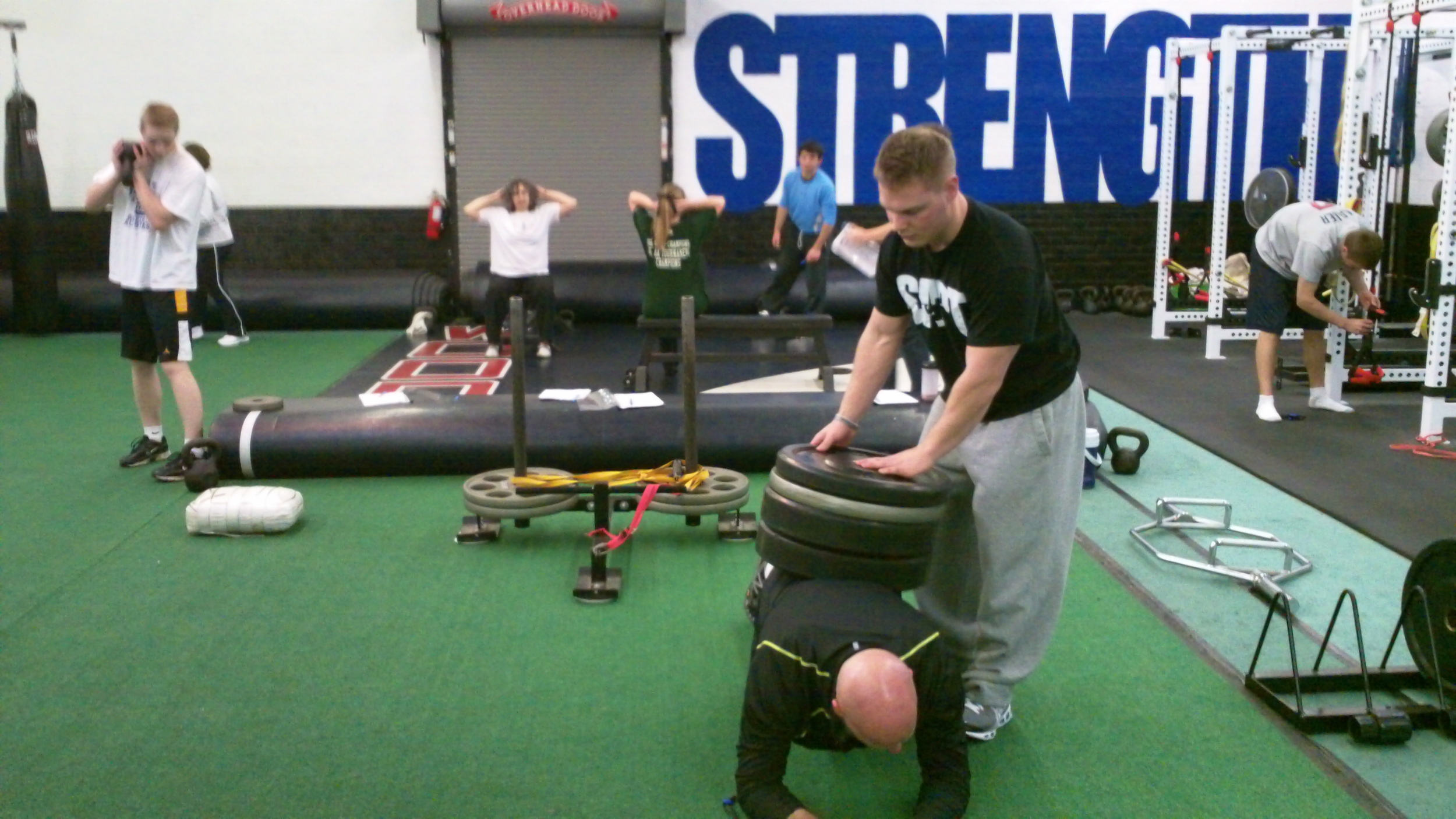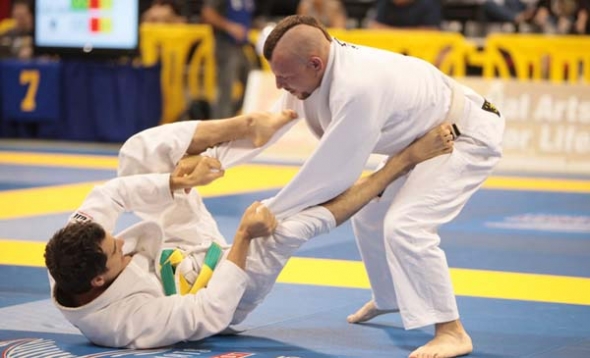Q & A: What's Wrong with Sit-ups?
Are sit-ups wrong? Who uses them and why? Is there a solution that is more effective and safer? Find out the answers to those questions and more in this detailed post about ab training and the sit-up.
Q: "What's wrong with sit-ups? I've read SAPT rarely programs them. I also read that doing lots of reps will not reduce belly fat. My wife wants to argue with me about it! Do they just plain not work? Are the somewhat effective? What makes the wrong?
Thank you!!!"
A. I wouldn't go so far as to say that sit-ups are WRONG, per se. It's just that the majority of people's time would be better spent throwing themselves in front of a moving school bus, or traveling back to the 14th century to ensure a solid infusion of the Black Plague into their bloodstream. Either one, really.
All kidding aside (even though I wasn't really kidding), when it comes to performing sit-ups: there's a time and a place. When people tell me they they "need" to perform sit-ups, I usually ask them a very simple question:
"WHY do you feel the need to do sit-ups?"
To which they'll usually respond with one of four answers:
1. "I like feeling my abs burn. You know, because I enjoy that sort of thing." 2. "I want six-pack abs." 3. "I partake in activities that require repeated spinal flexion (ex. MMA or military training)." 4. "Now that you mention it, Steve, I actually do not know why. Please kick me in the balls, repeatedly, to remind me not to be so stupid."
Maybe #4 is made up, and maybe #4 only applies to males, but I digress. Let's briefly tackle responses #1-3.
1. "I like feeling my abs burn. You know, because I enjoy that sort of thing."
Sure, I get it....fair enough. Allow me to present you with a myriad "core" exercises that will allow you to satiate your palate craving for all things burning abs without putting your spine at risk.
According to Dr. Stuart McGill (professor of spine biomechanics at the University of Waterloo), when you perform a sit-up, it places roughly 3,300 N (or, 730lbs) of compressive force on the discs of the lumbar spine. In case you were wondering, that's not a good thing.
Given that 80%+ of Americans will experience significant back pain during their lives, why include something in your routine that will only make your odds even more unfavorable? Maybe, perhaps, if we still lived in hunter-gatherer societies, we could get away with them. Not so much anymore thanks to the invention of the computer, office work, and sitting 8+ hours a day.
And please, for the love, never perform something like this, let alone for a bazillion repetitions:
I'll still train the heck out of people's "core", and give them plenty of what they need to reach their desired goals, but I do my best to do it via methods that AVOID placing that kind of ridiculous compressive force on lumbar vertebrae.
Try a few sets of any of the following, and I guarantee that both you - and your low back - will thank me later.
Pot Stirrir Plank
Bodysaw Plank (performed by my beautiful wife) If you don't have sliders, you can use towels on a tiled floor.
TRX Jacknife with Neutral Spine
Plank with Band (or Cable) Row
Reverse Crunch (hold a towel - or a half foam roll - between your calves and hamstrings)
Landmine (again, performed by my better half)
Any of these:
Not to mention, I didn't even include any of the myriad chop, lift, and pallof press progressions. Be consistent with training spinal stability (ex. using variations similar to the above), for a few months, then get back to me and let me know if your midsection didn't become stronger.
You're welcome.
What it comes down to is that if someone is paying me to help them look, move, and feel better - oh, and not to mention virtually putting me in charge of a large portion of their spinal health - I'm not willing to roll the dice with sit-ups.
Could they get away with it? Maybe. But why not strengthen their core via safer, and more effective, means?
2. "I want six-pack abs."
I have a very simple answer to this one: Be less fat. And, maybe, choose a different set of parents.
Don't mistake my tone here...my aim is not to appear cold, aloof, and perhaps even narcissistic toward their situation. I'm simply trying to save them some time, give them some realistic expectations, and save their spine to boot.
Possessing visible abs is a function of two things, and two things only: Bodyfat %, and genetics. The former is pretty self-explanatory, and with regards to the latter - well, some people will "unveil" their abs at a higher bodyfat than others. Also, typically, it's easier for people with longer torsos - relative to their legs - to see their abs sooner than those with shorter torsos. There are other forces at play, of course, but in general it is how it is.
Do you really think that performing sit-ups is the way to a shredded midsection? How about putting away the Oreos, and maybe saving dessert for weekends and special occasions? (Hint: getting home from work doesn't count as a special occasion.) Every one of us, as Homo sapiens, possesses a six-pack. Some are just more insulated than others.
I'm not going to elaborate on this point any further simply because I feel that the majority of you are able to put these puzzle pieces together for yourselves.
3. "I partake in activities that require repeated spinal flexion (ex. MMA or military "stuff")."
As deep-rooted as my vendetta is against sit-ups, I'd be foolish not to program them for this group. After all, there's a point where we have to respect specificity of training, and it's tough to get good at sit-ups without, well, TRAINING THEM to an extent.
With this group (fighters, military, along with some contact sport athletes), I will indeed intersperse sit-up variations into their training. Heck, we've even given the military guys timed BAND-RESISTED sit-ups in preparation for their testing. (Jason cursed us for this and continued to remind us of how much he hated them.)
Another favorite of mine is the Turtle Roll, which, IMO, looks like the easiest exercise in the world but yet will provide the most insane abdominal contraction of your life:
I've seen many well-conditioned athletes lie on the floor, gasping for breath after turtle rolling for just one set of twelve reps.
And there you have it.
SAPT Exercise of the Week: Turtle Rolls for the Anterior Core
Ever since Dr. Stuart McGill (professor of spine biomechanics at the University of Waterloo) unleashed his research on spinal health and published his book, Ultimate Back Fitness and Disorders, the fitness industry was awakened to the fact that the typical human sit-up places up to 3,300N of compressive force on the lumbar spine. For those who are wondering if this is a good thing: it's not. As such, when it comes to enhancing someone's "core" strength, I'm almost always going nix repeated spinal flexion in training (i.e. sit-ups), and opt for improving spinal stability. Think pallof presses, landmines, woodchops, single-arm farmers walks, and planks, to name a few.
Or, I may choose a host of anti-extension exercises to give someone their ab training fix, utilizing any of the 20+ demonstrations I give in the video below:
However, should ALL movements resembling a sit-up be avoided like the bubonic plague? I don't think so.
While I do believe that - nine times out of ten - one should train spinal stability in order to correct low back dysfunction, reduce the risk of injury, and morph into a healthy, high-functioning athlete; there are exceptions to the rule.
For example, if I'm training a number of mixed martial artists (which we're consistently doing at SAPT), are you telling me that I never need to help them improve their abdominal strength for guarding?
Or, if helping someone prepare for a military test, should I avoid having them do sit-ups even though the testing protocol calls for a very specific test in sit-up endurance?
(Disclaimer: What I am NOT saying is that you always need to train people in positions specific to where they find themselves in sport (Ex. If I'm training a boxer do I need to repeatedly punch him in the face?). However, sometimes a small dose of a particular training protocol is needed to maximally prepare someone for their respective event.)
Turtle Rolls
Enter the turtle roll. This is a brutal abdominal exercise that hammers the rectus abdominus, along with the internal and external obliques, to both maintain trunk flexion and resist trunk extension. See the demo below:
How to do it:
- Wrap your hands behind your head and touch your elbows to your knees
- Have a partner SLOWLY rock you up and down, touching your heels to the ground at the top
- Brace your abs HARD. Try not to generate any momentum to "swing" yourself up
- Perform 8-12 repetitions
- A cat walking around you is optional
The beauty of these is that you can do them virtually anywhere, as long as another person is close at hand. It is much harder than it looks to keep your elbows in contact with your knees, especially if your partner is moving you slowly. After you master a bodyweight turtle roll, you can hold a weight plate on top of your head (you won't need much though, trust me).
A couple caveats:
- If you have back pain, I'd avoid this one. You can receive plenty of good ab training via other means
- If adding turtle rolls in a training cycle, be sure to do plenty of work for the erectors and include a healthy dose of thoracic mobility drills to prevent hyperkyphotic postural adaptations in the thoracic spine. You should be doing this anyway, though....GOSH!!
- Don't get too addicted to these. They'll certainly fill your "I need to feel my abs burn" craving but be careful to keep your total volume of spinal flexion work in check
That's it, try it out and let me know what you think.







